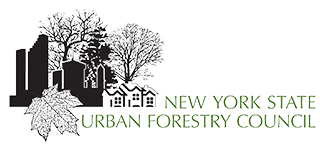Blog
Trees, Please!
Stoneleigh, Villanova. Photo John Tweddle “Is the tree as it rises delighted with its many branches, each one like a poem?” —Mary Oliver
Results from a Formal Survey of Urban Forest Management in New York State: Part 1, Program Status
Guest Contributor: Rebecca Hargrave, Associate Professor, SUNY Morrisville and a Ph.D. Candidate at UMass Amherst Part One of a Series Focusing on Urban Forest Management in New York State In 2021, many communities across New York State participated in a survey concerning municipal [...]
Alliance for Community Trees Reunion in Atlanta
Guest Contributor: Nancy A. Wolf, Environmental Education Consultant In early April 2024, Trees Atlanta was the site of the first-ever reunion of the founders of the Alliance for Community Trees (ACT). Twenty urban forestry veterans greeted each other with hugs, memories and stories. All who [...]
New York State Arborists Plant Health Care Workshop
NYSA will host an opportunity in Western New York for tree services professionals to network and learn about tree care and resources available. Place: Drave’s Arboretum, 1815 Sharrick Rd, Darien Center Date: Thursday, August 15, 2024 Program: 8:00 am Welcome and Introductions 8:30-9:30 am “Invasive tree insects [...]
Environmental Justice Community Impact Grants Deadline August 7, 2024
$7.34 million in Environmental Justice Community Impact Grants is available to help communities most vulnerable to the impacts of pollution and climate change address environmental concerns and legacy pollution. Grants will support community-based organization projects that engage their communities around environmental justice issues and deploy community-driven solutions. This funding is administered by [...]
Urban Forests in Every City: Visions of Connecting People to Trees
Guest Contributor: Ruby A. Olisemeka, Director of Urban Engagement, Westchester Land Trust Photos by John Zeiger What is a vision? It’s a thought or image that captivates the mind, demanding the use of our human creative capacity to bring it into existence. And some visions, [...]
Subscribe to TAKING ROOT, the monthly e-news of the NYSUFC
Our Mission
Image at the top of this page:
Central Park, NYC by Carlos Alcazar
Our Partners













Get Social